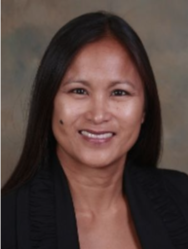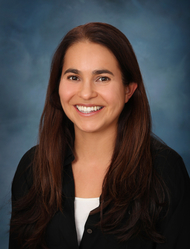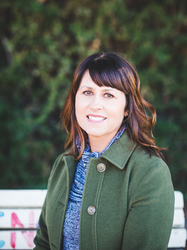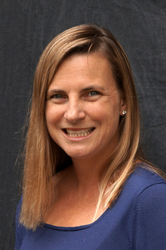In January, California took a historic leap forward to promote universal ACEs screening of the state’s 13 million adults and children in the Medi-Cal program. The eventual goal is to promote ACEs screening for all patients, but this is a first step in dealing with a major issue that ACEs science has identified: that many children will develop serious health problems later in life because the healthcare system is not currently set up to detect the roots of those problems.
The term ACEs, which stands for adverse childhood experiences, comes from the groundbreaking CDC-Kaiser Permanente Adverse Childhood Experiences Study (ACE Study), first published in 1998 and comprising more than 70 research papers published over the following 15 years. The research is based on a survey of more than 17,000 mostly white, middle- and upper middle-class adults with great heath care, and was led by Drs. Robert Anda and Vincent Felitti. The study linked 10 types of childhood adversity — such as living with a parent who is mentally ill, has abused alcohol or is emotionally abusive — to the adult onset of chronic disease, mental illness, violence and being a victim of violence. Many other types of ACEs — including racism, bullying, a father being abused, and community violence — have been added to subsequent ACE surveys. (ACEs Science 101; Got Your ACE/Resilience Score?)
The ACE Study, which is an epidemiological analysis of childhood adversity, is one of the five parts of ACEs science, which also includes how toxic stress from ACEs affect a child’s brain, the short and long-term health effects of toxic stress, the epigenetics of toxic stress (how it’s passed on from generation to generation), and research on resilience, which includes how individuals, organizations, systems and communities can integrate ACEs science to solve our most intractable problems.
What’s particularly relevant to the new California plan, known as the ACEs Aware Initiative, is that ACEs are considered to be a reliable predictor of a person’s risk for chronic illness, perpetrating or being a victim of violence, and other issues. That’s why the healthcare system is a crucial point of contact where these issues can be identified and dealt with. But it involves a lot of retooling and retraining. Physicians need to be educated on how to screen their patients for ACEs, and they need a system to connect patients in what’s often called a “warm handoff” to whatever services they may need: social services to help them find housing, if they’re homeless or experiencing serious housing instability; mental health treatment; or violence prevention programs.
To get a deeper sense of what it would take to successfully implement such a statewide effort, the California Campaign to Counter Childhood Adversity (4CA), a coalition of more than 100 California-based organizations, developed and distributed two different anonymous surveys last September—one to doctors, community-based organizations and advocates, and another to organizations that provide training in how to interact with others in a way that is sensitive to the trauma that results from childhood adversity.

“What we were trying to find out is how do we ensure that those concerns are voiced and how do we put forth those concerns and ensure that the state and other community members are able to ensure that the right resources are available,” says Afomeia Tesfai, the policy and advocacy manager at the Center for Youth Wellness, which is, along with ACEs Connection and Children Now!, leading 4CA.
One hundred thirty eight surveys were completed by people who live and work in all 58 counties of California. The majority were from urban areas that serve those on Medi-Cal or who are uninsured, and some of the surveys went to doctors who were already screening for ACEs. Among the findings:
- There was across-the-board agreement among physicians and community organizations that ACEs science education is essential, even if they expressed concerns about screening.
- There is widespread need for educating groups who are involved in caring for children and the wider community about resources available in communities that support those with ACEs.
- Survey respondents wanted more information about how ACEs screening in the doctor’s office would link to supportive services in the community.
- Half of the doctors who were already screening for ACEs were unaware that the State of California would be reimbursing them $29 for each patient.
- There was concern that not enough mental health providers accept Medi-Cal.
- There are concerns about confidentiality.
Some of the physicians surveyed would like to see the state provide reimbursement for other pediatric ACEs screening tools besides the PEARLS tool, which is what the pediatric ACEs screener is called. (PEARLS stands for the Pediatric and ACEs-related Life Events.) That particular suggestion is shared by Dr. Cathy Tan, the medical director of pediatrics for the Pediatric Department at SAC-Health Systems, which includes Loma Linda University, who oversees their resident clinic where they have been using the Whole Child Assessment (WCA) screening tool since 2016 and see about 2,000 pediatric patients monthly. (The WCA along with the PEARLS tool were among three options recommended for reimbursement by an expert working group to ensure flexibility for pediatric practices with different needs. The workgroup was assembled by the California Department of Health Care Services. For more background, read this storyand this one.)

“There’s a little concern, at least for pediatrics, that you are limited to using only one tool,” Tan says. “I can understand some of the background for that, why it’s necessary for long term [research] on how this works—because if you’re not using the same [screening tools], how are you going to do good research? But I think it would make it easier for those who are already doing [some kind of ACEs] screening to be able to bill for it versus saying, ‘Nope you got to change your whole entire practice to use this specific [ACEs] screen.’”
However, switching to the PEARLS tool and dropping the WCA is not viable for them, says Tan. That’s because the WCA has embedded in it questions about ACEs as well as other questions that doctors are required to ask patients, according to Tan. The purpose she says, was to streamline several required questionnaires into one for both families and doctors.
They will be adding PEARLS in the coming months, which means adding 17 extra questions to the 50 questions in the WCA. “The biggest challenge is the impact it’s going to have on patients and their families,” she says.
Another big question was the issue of how doctors can provide relevant support services. Tan says that behavioral health providers are available in her clinic, “but I can see for people who are in private practices, that could be a struggle.”

It’s been a real worry for Dr. Kate Williamson, a pediatrician in private practice with Southern Orange County Pediatric Associates in Ladera, CA, who began screening for ACEs using the PEARLS screener a mere three weeks ago. “I think that's the biggest concern that everybody had was, ‘Okay, we're going to identify kids who have mental health issues, [but] we don't have a lot of mental health therapists to start with, so how are we going to make this work?’”
How doctors’ offices link up with support was in fact a major issue for organizations in contact with Crystal O’Grady, the early child coordinator of the Office of the Young Child in Pasadena, CA, which works with all city departments and community organizations focused on children up to the age of 5.

“The biggest concern is that it just stops in that [doctor’s] office after [the ACE score] is collected, and there's no actual service delivery or connection that comes after that,” she says.
O’Grady also says that there are genuine fears about confidentiality that have been exacerbated by the public charge rule. It went into effect in February and can jeopardize an immigrant’s application to remain in the United States if they’re receiving public benefits for more than a year, according to the website of the Immigrant Legal Resource Center. “Collecting data in a more formalized way, even in these screenings, could be scary to people because they think all of the data is attached to one another. And that [these agencies] are making a public record of them in the sky. That’s how people see systems,” says O’Grady.
And Mercedes Santoro, the deputy director of the County’s Parks and Recreation programming in Los Angeles county, points out the importance of educating the entire world of “social service delivery,” or at least any part of the system that’s involved in children’s lives, about ACEs. “It needs to be

customized in a way and then delivered in a hands-on manner such that any level of frontline staff can take the information, understand it and apply it, and then even recognize their own emotions when they're in the midst of dealing with a difficult situation involving a parent or child,” says Santoro.
As for the organizations surveyed that already train in trauma-informed practices and ACEs screening, respondents agreed that to have a successful statewide effort, it was essential that “all staff are trained and provided the support for understanding ACEs and trauma-informed practices.”
Based on the survey responses, 4CA made several recommendations, including:
- Expand education and training for medical providers beyond the online provider trainings (that are now offered via the ACEs aware website).
- Offer training and education for non-medical providers in agencies that provide supportive services to referred patients.
- Support community public education campaigns about ACEs screening programs.
- Help build and develop coordinated resource and referral networks to ensure that patients who need help can find it in their communities.
“We want to make sure this is disseminated widely, because we think community voice is critical as the state implements ACEs and trauma screening,” says Tesfai. “This [survey summary and report] is another tool that advocates can use to demonstrate why we need the education piece and to ensure that we are addressing all the issues along the way that will sustain the [state ACEs and trauma-screening] program.”
For more about the survey, please see the attached file below and visit the 4CA website here.

Finally, many of the survey respondents stressed the need for getting the word out about ACEs science, possibly in a countywide media campaign to raise awareness about the longterm effects of trauma. Caren Schmidt, the associate director of behavioral health for Marin Community Clinics, also stressed the need for a broad educational approach. ”I think for us it’s not just about the screening, it’s about building a culture of resilience for our patients and our staff,” she says. “And I think that that's really important for other organizations. I don't think this is something you could just roll out if you hadn't already been having the conversations about trauma and its effects.”
Despite all the challenges involved in implementing a whole new system, O’Grady is enthusiastic about the potential impact of widespread ACEs screening and education. “I really think this opens up the door for exciting opportunities for local planning on how to address the needs of children and families that are experiencing ACEs or prevent them from even happening in the first place,” she says. And she hopes that greater awareness about ACEs science will eventually lead to “de-stigmatization of some of the behaviors children may exhibit because they have been exposed to trauma.”

Comments (0)